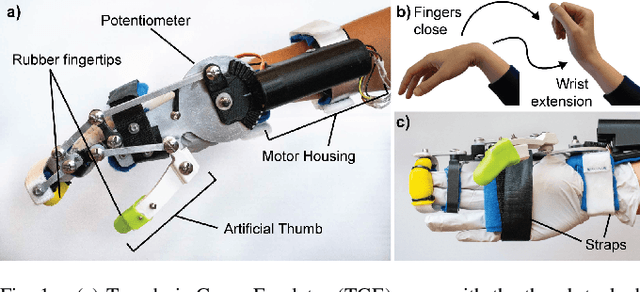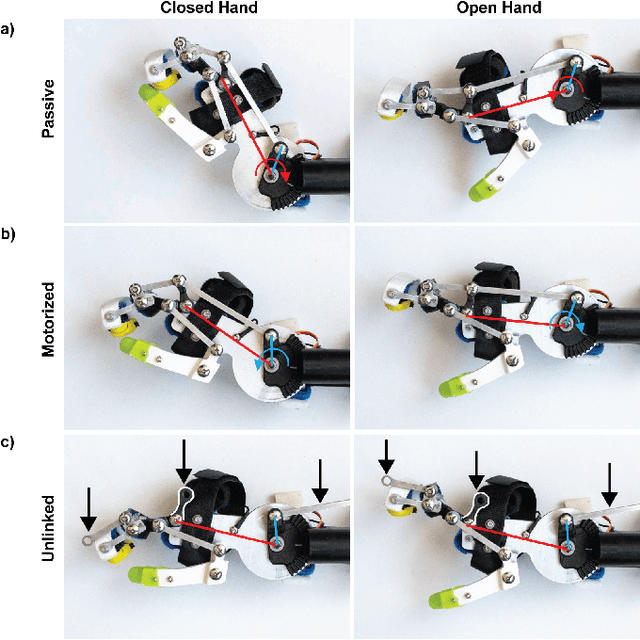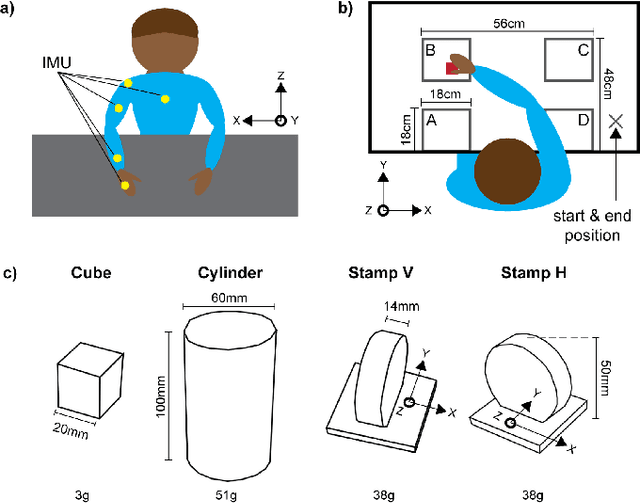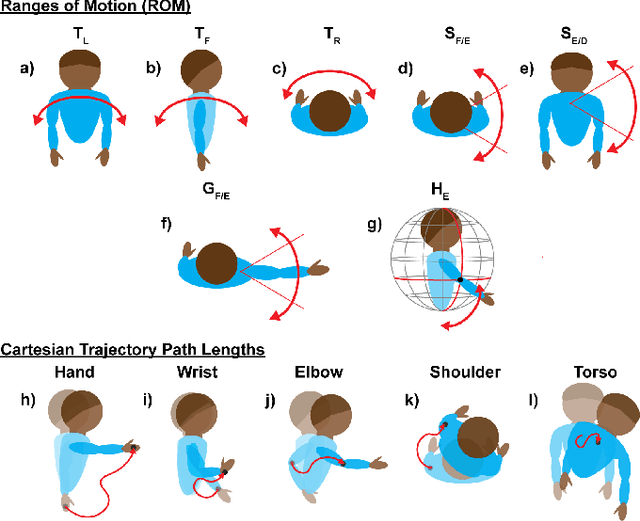Erin Y. Chang
Robotically adjustable kinematics in a wrist-driven orthosis eases grasping across tasks
Jul 22, 2024Abstract:Without finger function, people with C5-7 spinal cord injury (SCI) regularly utilize wrist extension to passively close the fingers and thumb together for grasping. Wearable assistive grasping devices often focus on this familiar wrist-driven technique to provide additional support and amplify grasp force. Despite recent research advances in modernizing these tools, people with SCI often abandon such wearable assistive devices in the long term. We suspect that the wrist constraints imposed by such devices generate undesirable reach and grasp kinematics. Here we show that using continuous robotic motor assistance to give users more adaptability in their wrist posture prior to wrist-driven grasping reduces task difficulty and perceived exertion. Our results demonstrate that more free wrist mobility allows users to select comfortable and natural postures depending on task needs, which improves the versatility of the assistive grasping device for easier use across different hand poses in the arm's workspace. This behavior holds the potential to improve ease of use and desirability of future device designs through new modes of combining both body-power and robotic automation.
Tenodesis Grasp Emulator: Kinematic Assessment of Wrist-Driven Orthotic Control
Nov 22, 2021



Abstract:Wrist-driven orthotics have been designed to assist people with C6-7 spinal cord injury, however, the kinematic constraint imposed by such a control strategy can impede mobility and lead to abnormal body motion. This study characterizes body compensation using the novel Tenodesis Grasp Emulator, an adaptor orthotic that allows for the investigation of tenodesis grasping in subjects with unimpaired hand function. Subjects perform a series of grasp-and-release tasks in order to compare normal (test control) and constrained wrist-driven modes, showing significant compensation as a result of the constraint. A motor-augmented mode is also compared against traditional wrist-driven operation, to explore the potential role of hybrid human-robot control. We find that both the passive wrist-driven and motor-augmented modes fulfill different roles throughout various tasks tested. Thus, we conclude that a flexible control scheme that can alter intervention based on the task at hand holds the potential to reduce compensation in future work.
 Add to Chrome
Add to Chrome Add to Firefox
Add to Firefox Add to Edge
Add to Edge